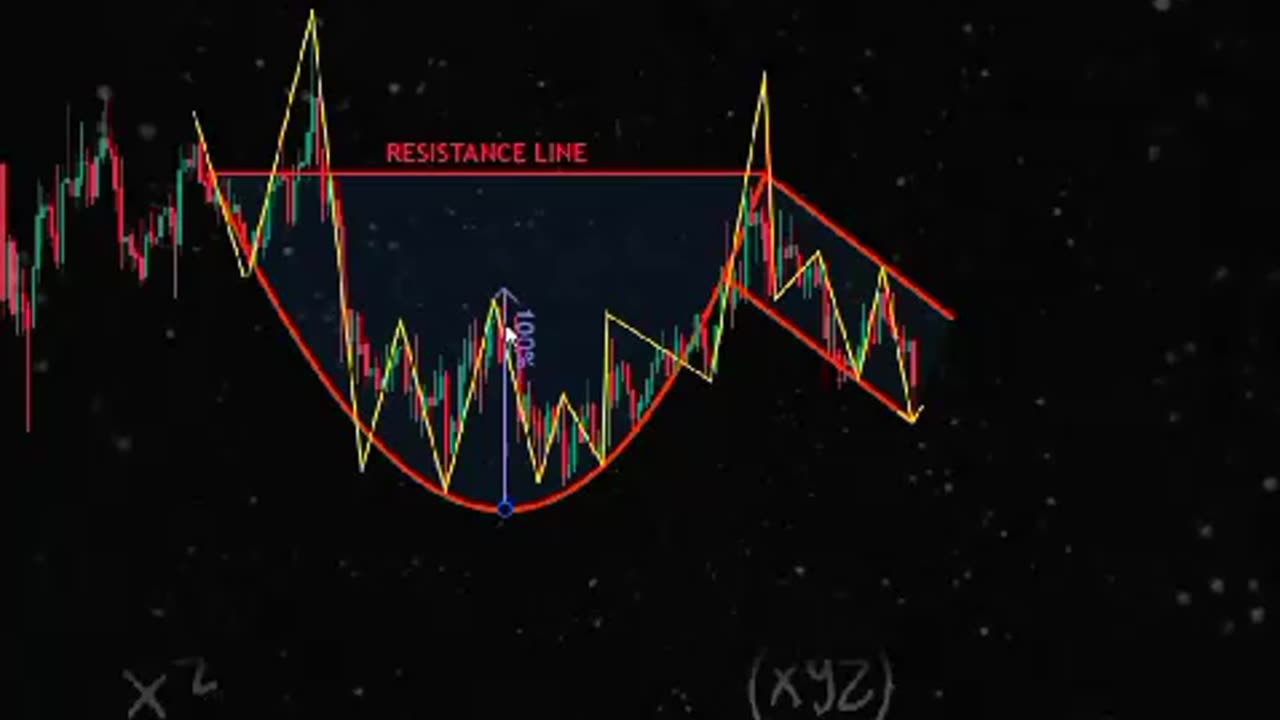Premium Only Content

TRADING Pattern 3 - LEARN and EARN #trading #stockmarket #finance #trending #trendingshorts
A price pattern that denotes a temporary interruption of an existing trend is a continuation pattern. A continuation pattern can be considered a pause during a prevailing trend. This is when the bulls catch their breath during an uptrend or when the bears relax for a moment during a downtrend.
2
While a price pattern is forming, there is no way to tell if the trend will continue or reverse. As such, careful attention must be placed on the trendlines used to draw the price pattern and whether the price breaks above or below the continuation zone. Technical analysts typically recommend assuming a trend will continue until it is confirmed that it has reversed.
In general, the longer the price pattern takes to develop, and the larger the price movement within the pattern, the more significant the move once the price breaks above or below the area of continuation.
If the price continues on its trend, the price pattern is known as a continuation pattern. Common continuation patterns include:
Pennants, constructed using two converging trendlines
Flags, drawn with two parallel trendlines
Wedges, constructed with two trendlines that would converge if they were long enough, where both are angled either up or down
Triangles are among the most popular chart patterns used in technical analysis since they occur frequently compared to other patterns. The three most common types of triangles are symmetrical triangles, ascending triangles, and descending triangles. These chart patterns can last anywhere from a couple of weeks to several months.
Reversal Patterns
A price pattern that signals a change in the prevailing trend is known as a reversal pattern. These patterns signify periods where the bulls or the bears have run out of steam. The established trend will pause, then head in a new direction as new energy emerges from the other side (bull or bear).
3
For example, an uptrend supported by enthusiasm from the bulls can pause, signifying even pressure from both the bulls and bears, then eventually give way to the bears. This results in a change in trend to the downside.
Reversals that occur at market tops are known as distribution patterns, where the trading instrument becomes more enthusiastically sold than bought. Conversely, reversals that occur at market bottoms are known as accumulation patterns, where the trading instrument becomes more actively bought than sold.
-
 2:49:10
2:49:10
TimcastIRL
6 hours agoElon Musk Says X Hit By MASSIVE Cyberattack From Ukraine, Rumble Hit Too w/Ben Davidson| Timcast IRL
153K76 -
 2:05:10
2:05:10
Kim Iversen
8 hours agoFree Speech for Me, But Not for Thee: Trump Admin’s Protester Crackdown Sounds MAJOR Alarms
59.2K218 -
 1:29:26
1:29:26
Glenn Greenwald
9 hours agoICE Detains Permanent Resident for Protesting Israel; European Leaders Make Maniacal Rearmament Vows They Cannot Keep | SYSTEM UPDATE #421
107K178 -
 1:02:56
1:02:56
Donald Trump Jr.
11 hours agoUSAID Slush Fund Slashed, X Cyberattack, Plus Interview with Nate Morris | Triggered Ep.223
124K111 -
 5:48:40
5:48:40
Dr Disrespect
14 hours ago🔴LIVE - DR DISRESPECT - THE SHOTTY BOYS - WARZONE, PUBG, FORTNITE
204K41 -
 2:12:50
2:12:50
Adam Carolla
16 hours agoDouble Murder Convict to be executed by Firing Squad + Comedian Elon Gold + Comedian Carol Leifer
76.3K5 -
 46:08
46:08
Kimberly Guilfoyle
11 hours agoBad Day to be a Bad Guy: FBI Taking Down World’s Worst Criminals, Live with John Nantz | Ep.203
161K60 -
 DVR
DVR
Redacted News
10 hours agoWhat's REALLY going on in Syria? | Redacted with Natali Morris
172K128 -
 54:18
54:18
Candace Show Podcast
10 hours agoHarvey Speaks: Jessica Mann & The Five Year Affair | Ep 3
182K84 -
 56:53
56:53
Grant Stinchfield
9 hours ago $7.37 earnedFreeze Spending & Kick the Can Down the Road... Why Republicans Should do Just That!
95.9K15